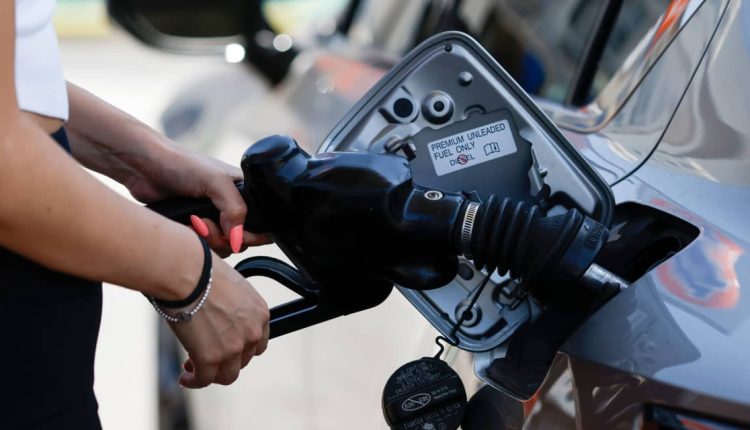September always struck me as the real beginning of the year, not the ninth month on the conventional calendar. It’s the start of the school year for most, the Jewish New Year, and the beginning of real football, not what we Yanks call soccer.
Yet rather than looking ahead with optimism, as many tend to do after clinking glasses and singing Auld Lang Syne on New Year’s Eve, Americans mostly are crying in their beer. Numerous opinion polls show most people think the economy is lousy, contrary to both their own personal circumstances and all objective data, much to the consternation of the Biden administration as the 2024 elections loom ever closer.
“The Consumer Is In Great Shape (Really),” according to the title of a report from Mizuho Securities economist Alex Pelle. While lots of attention is paid to the notion of dwindling “excess savings,” a nebulous concept at best, household wealth relative to incomes has returned to close to its all-time highs. (And for what it’s worth, his estimate of those excess accumulated savings is between $400 billion and $1 trillion, a significantly bigger cushion than the conservative estimate of $100 billion from the Federal Reserve Bank of San Francisco.)
Indeed, household wealth rose to a new peak in the second quarter, according to the latest Fed data released this past week. Households’ net worth increased by $5.5 trillion, to $154.3 trillion in the period, notes Michael Lewis, who heads the Free Market Inc. advisory. Household real estate holdings appreciated by $2.4 trillion, or nearly 6%, in the second quarter, while stock market holdings were up $1.7 trillion, or 6%, though they were off 6% from their peak at the end of 2021.
Looking at other aspects of consumers’ finances, Mizuho’s Pelle found net household wealth relative to incomes is just below a record 400%. That largely reflects the appreciation of equities and real estate assets. As for what can be readily turned into cash and spent, liquid assets are just shy of their highs at 90% of incomes.
On the other side of the balance sheet, household liabilities are near 20-year lows relative to income, at about 100%. And with any sentient homeowner locking in the lowest mortgage rates in history in recent years, average debt service is less than 10% of disposable income. However, nonmortgage interest expenses have shot up to a 20-year high of 2.5% of disposable income because of credit-card debt and other borrowings, but mortgage interest is near a record low of 2.7% of income.
Yet consumers seem more concerned about the prices they pay for stuff than the values of what they own. And nothing seems to capture their attention as much as the cost of filling up their automobiles (at least for the mass of us who don’t own electric vehicles). As such, the White House has to be concerned about the latest uptick in crude oil prices, which may be expected to show up at the petrol pumps.
U.S. crude futures are up nearly 10% in the past two weeks and up over 30% from their 2023 lows touched six months ago, according to our Dow Jones data colleagues. That follows Saudi Arabia’s decision to extend its output curbs through the end of the year. What a shock, writes Peter Atwater in his Financial Insyghts commentary: that the Saudis would move to boost crude prices ahead of Aramco’s plan to sell $50 billion in stock in what would be the record equity raise in history.
The appreciation of equities, while enriching households, also has made equities pricey, especially when compared with interest rates. According to the Leuthold Group’s always insightful monthly report, known as the Green Book, the stock market is the most expensive relative to Treasury yields in 21 years. That is based on the so-called Fed Model, which compares the earnings yield of the
S&P 500,
based on forward earnings estimates, with the benchmark 10-year Treasury yield.
Leuthold Chief Investment Officer Doug Ramsey is dismissive of the Fed Model’s predictive abilities. But he adds that the small extra increment of return from equities over risk-free Treasuries explains why “market pundits have finally jilted their mistress of a dozen years: TINA (There Is No Alternative).” By his calculation, the 10-year Treasury yield is 0.79 times the S&P earnings yield, more than double the 0.37-times average of the “free money” years of 2009-21.
Even with the rise in bond yields, corporate financial officers think it’s a good time to borrow—before credit gets still more expensive. As is typical after issuers and investors return from their summer holidays, there was a surge in new bond volume this past week. That afforded companies reasonably priced capital, observes Cliff Noreen, head of global investment strategy at MassMutual. At the same time, he adds, investors in private and public corporate debt, both investment-grade and high-yield, are reaping attractive yields.
The key point is that the returns from credit are competitive with equities, with lower risk. Cash, investment-grade bonds, and high-yield credit already are attractive, providing bird-in-the-hand yields compared with what might lie in the bush. And stocks have looked vulnerable as some of the so-called Magnificent Seven technology megacap names have stumbled.
This month also has another attribute. Contrary to T.S. Eliot, September is historically the cruelest month for stocks. Now equities also are challenged by competitive yields from fixed income.
Write to Randall W. Forsyth at [email protected]
Read the full article here

